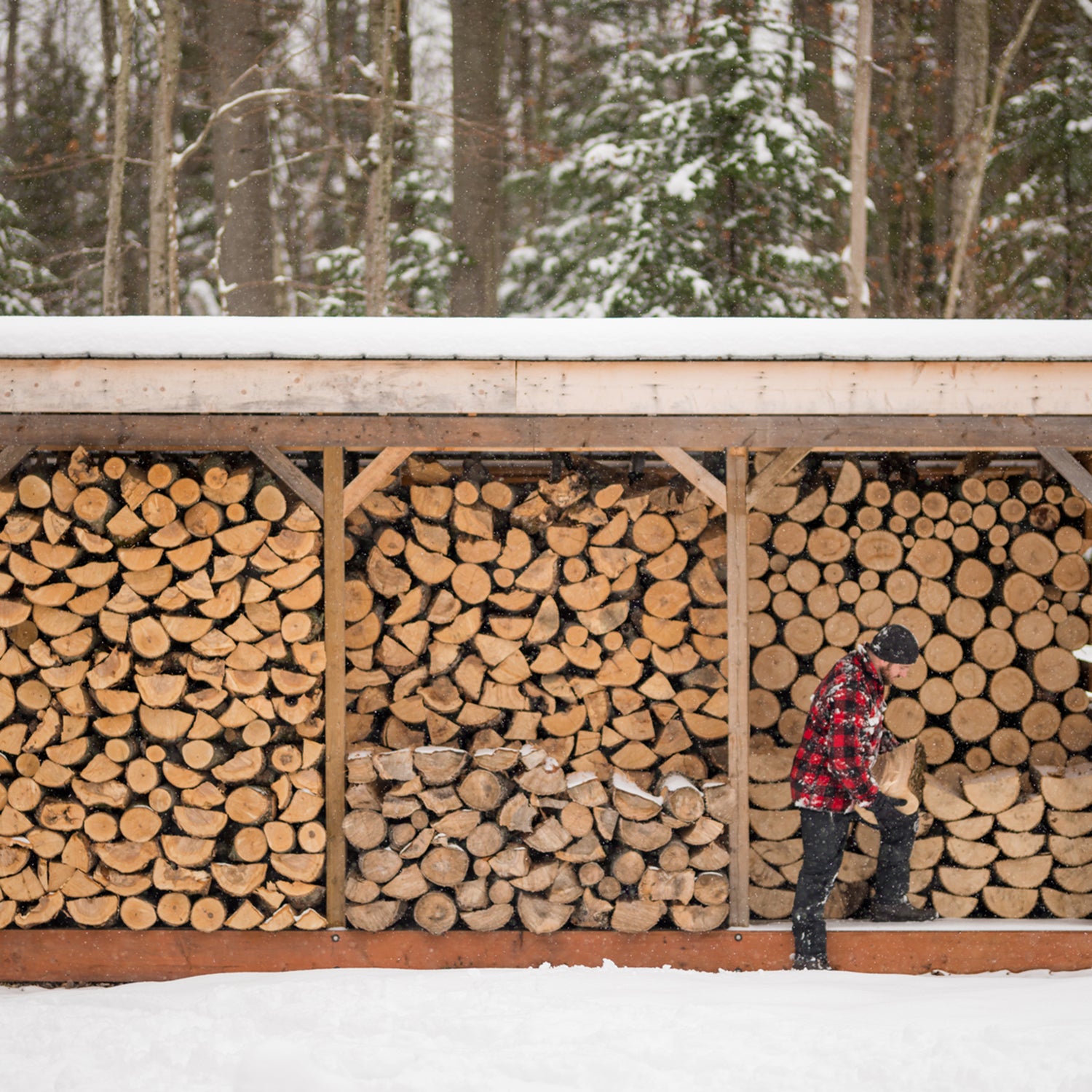In 2012, I spent a season on a wildland firefighting crew based just outside California’s Sequoia National Park. Our first assignment wasn’t a wildfire��but a cleanup project at in the eastern Sierra Nevada, where a had been severe enough to uproot a distressing number of mature lodgepole pines. We were to limb the crowns of fallen trees, cut the trunks into manageable rounds, and then schlep these to hydraulic wood-splitting machines, where a crew member would crank out triangular wedges. The final step was to stack the logs so they could spend months drying in the High Sierra air��to eventually become��firewood for future campers. The work didn’t have the romance and danger of trying to outflank an advancing inferno, but it provided the gratification of turning arboreal debris into tinder for—one hoped—less devastating fires.
Recently, the joys of splitting and stacking wood helped alleviate a different, more internal, kind of chaos. In mid-2020, after months of COVID quarantining in our city apartment and doing our best not to murder our two-year-old, my wife and I escaped to an upstate Airbnb for a few days over the��summer. We had been fantasizing about a backyard and, more generally, visiting a place where social-distancing etiquette was moot. Our eventual sanctuary was a cabin in the Finger Lakes region of New York. The property bordered a small hardwood forest, which, as luck would have it, was strewn with precut rounds of timber. I couldn’t resist. To the amusement of my wife (and the bewilderment of my son), I bought an ax��at the local hardware store and set to work quartering the wood with repressed urbanite gusto.
I made lots of piles—ostensibly to warm the winters of an anonymous future tenant��but also as a form of self-administered therapy. By the end of our stay, my labor was manifest in a series of vaguely trapezoidal arrangements of freshly split maple: ephemeral monuments to my restored, if equally ephemeral, equilibrium.
Is there any experience as instantly rewarding as splitting a log with a single swing of an ax? It might be because I got a D in high school physics, but to me it’s always felt a little magical that, with a decent tool and basic marshaling of gravitational force, you can cleave something as stout as an 18-inch cylinder of wood. It seems like it shouldn’t be that easy. At times, of course, it isn’t. In the past, I have been humiliated by hidden knots and logs that were just out of my league, resulting in an extended and extremely uncool struggle of trying to wriggle an��ax-head free. But these moments are more than redeemed by the atavistic pleasure of seeing a round cleanly pop open along the grain. The feeling is triumphant, as though you have harnessed an elusive energy.
Yet��it won’t do to merely split a bunch of logs and leave them in a state of splintered entropy like some barbarian. If splitting wood allows us to indulge in an ancient form of violent release, then the process of building piles offers a reassuring sense of order and purpose. Here, in your small corner on Planet Earth, in the middle of a vast, indifferent cosmos, you can achieve zen-like calm by methodically layering pieces of combustible matter for future use.
What is the best method for stacking wood? There are rules of thumb: Your pile should be slightly elevated, so as not to soak up any ground moisture. Logs should be arranged compactly, though��small gaps are good for airflow. A windy spot helps the wood dry, but you don’t want 100-miles-per-hour, wrath-of-Aeolus-level wind either. As with most things, a little common sense goes a long way.
This is a subject that people tend to have pretty strong opinions about, so please don’t think I’m so insane as to attempt a detailed stacking guide for ���ϳԹ���, only to have the woodsmansplainers bust out their hatchets. A few years ago, the Norwegian writer Lars Mytting published a book dedicated to the art. The 2015 English translation is titled: . (The book’s publication coincided with the regrettable rise of the lumbersexual��trend, which might explain why it was an international bestseller.) In the chapter on wood stacking, Mytting writes: “In Norway, discussions on the vexed question of whether logs should be stacked with the bark facing up or down have marred many a christening and spoiled many a wedding when wood enthusiasts are among the guests.”
There’s a section where Mytting claims that, in 19th-century Maine, young women would use the physical characteristics of woodpiles to assess a man’s viability as a potential husband. A few examples:
Tall pile: Big ambitions, but watch out for staggering and collapse.
Large and small logs piled together: Frugal, Kindling sneaked in among the logs suggests a considerate man.
Unfinished pile, some logs lying on the ground: Unstable, lazy, prone to drunkenness.
And��my personal favorite:
Rough, gnarled logs, hard to chop: Persistent and strong willed, or else bowed down by his burdens.
I resisted the temptation to use this approach to psychoanalyze myself during my trip upstate, where some of my creations were more wobbly than I would have liked. (Lack of conviction?) At Devils Postpile, unsurprisingly, our efforts were more impressive, not least because we were working under the glowering supervision of a crew boss with outdoorsman bona fides up the wazoo. (I am ashamed to admit that I forget where he stood on the question of bark side up versus��bark side down.) Of course, in both instances I wasn’t stacking wood for my own personal use��or to win the admiration of the miller’s daughter. Assembling a decent woodpile, however, is always an end in itself.
If, , the trials of the pandemic are ultimately just a grim overture to our looming ecological cataclysm, the current moment is a reminder that focusing our energy on small local projects is one way to stave off despair. (At least for those of us who are fortunate enough to be preoccupied with our pandemic fatigue��rather than, say, our survival.) It’s a luxury, to be sure, but sometimes cultivating your own garden really is the thing to do. Some people become sourdough freaks, but if given the choice, I’ll always prefer to stack wood.


